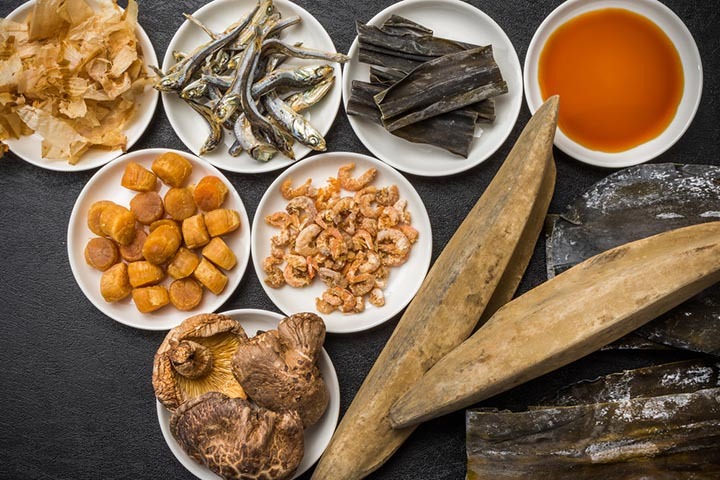#gallery-1 {
margin: auto;
}
#gallery-1 .gallery-item {
float: left;
margin-top: 10px;
text-align: center;
width: 100%;
}
#gallery-1 img {
border: 2px solid #cfcfcf;
}
#gallery-1 .gallery-caption {
margin-left: 0;
}
/* see gallery_shortcode() in wp-includes/media.php */
FOOD: Umami
Umami – the most mysterious of the five basic flavours and Japan’s secret weapon. But what exactly is it, and how can we inject our cooking with the taste that makes Japanese food so delicious?
Just like sweetness, saltiness, bitterness and sourness, umami is a naturally occurring basic taste – an intense savoury flavour and the reason why fermented, smoked, aged and cured foods are so deliciously moreish. Whilst sweet, salt, bitter and sour have been accepted and understood for hundreds of years, umami was only discovered in 1908 by Japanese chemist Dr. Kikunai Ikeda, who identified the umami taste as a separate ‘meaty’ flavour experienced when eating foods rich in glutamates. Since then, more than 40 different chemical combinations have been determined to give rise to umami in foods, and Japan’s famous flavour has gained more and more attention as a way to eat well and stay healthy.
So how can we attain umami in our lives? The fifth flavour is a great way to ramp up the tastiness of the food we eat, and has the added benefit of making us feel fuller faster, so that we’re encouraged to eat less. Some foods, like tomatoes, mushrooms, seaweed and shellfish are naturally rich in umami. However, it’s processes such as curing, smoking, aging and fermenting which turn relatively bland ingredients such as pork, salmon, dairy milk and soy beans into food that packs a serious flavour punch – think iberico ham, smoked salmon, blue cheese and soy sauce. A small amount of any umami can lift the flavour of any meal, so the addition of umami-rich ingredients into a dish is a simple way of making your food instantly more mouth-watering.
For more ideas check out Laura Santtini’s At Home with Umami cookbook, or to make things easy, pick up a pot of umami paste – available at most supermarkets.
Image Source: Michelin Guide

